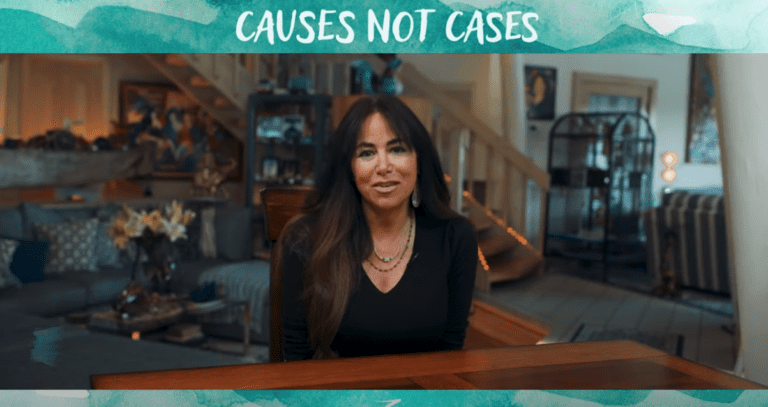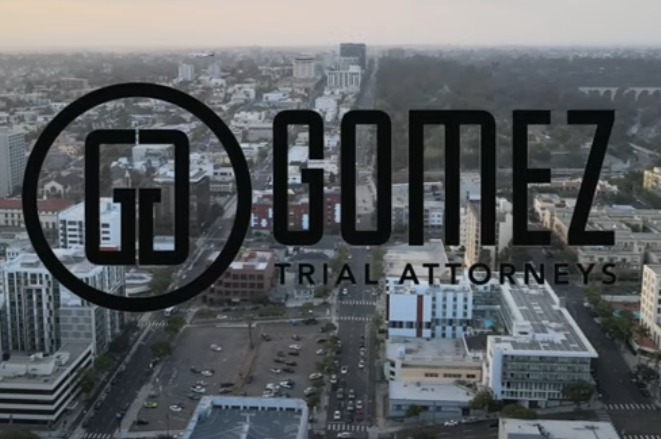
It’s an uncomfortable feeling for anyone when a car is following so closely that it feels like it is right on your bumper. Your turn is coming up, and you have to brake, but if you do, the car behind could rear-end you.
In California, tailgating is against the law. Furthermore, if another driver causes an accident by following your vehicle too closely, you can seek compensation for the expenses and impacts of your resulting injuries from the at-fault party.
If a driver followed you too closely, crashed into you, and injured you, an experienced car accident attorney can pursue compensation for your injuries and impacts. Contact an attorney to learn about your legal options in your case. Meanwhile, read on for more information about safe following distances and how to obtain compensation after being injured in a tailgating accident.
[lwptoc]
What Is a Safe Following Distance, and Why Does It Matter?
California’s traffic law states that drivers may not follow another vehicle more closely than is reasonable or prudent, taking into account the vehicles’ speed and the traffic conditions of the roadway. So what is a safe following distance? The answer to that question is that it depends on the vehicles in question.
For example:
- If you are in a passenger vehicle following a farm tractor, which generally has a maximum speed of about 25 miles per hour, you should allow at least four car lengths between the tractor and your vehicle.
- Follow another passenger car by keeping at least 16 car lengths between you—about 243 feet. This ensures enough space to perceive and respond to a vehicle stopping suddenly by braking before hitting the vehicle ahead. The heavier the following vehicle is and the faster it travels when the driver brakes, the more distance it needs to stop. Often, congested, southern California roadways don’t provide this space when people speed or tailgate. Generally, another vehicle will slide into the space you’ve built. A general rule of thumb in heavier traffic is to keep three seconds between your vehicle and the one in front of you. This may give you time to stop or take evasive maneuvers.
- If you are following a semi-truck, keep 300 feet between the truck and your vehicle, or about 20 car lengths. This not only protects against a rear-end collision but can also provide you the time you need to react to other potential hazards, such as something falling out of the back of the truck. Again, it is very difficult to maintain this amount of following distance on busy California roadways. However, the more distance you can put between the truck and your vehicle, the better. Semi-trucks generally have a high ground clearance, which may provide just enough space for a smaller vehicle to slide beneath it in an accident. This phenomenon is known as an underride, which often produces fatal consequences.
- If you are following an emergency vehicle, such as a police car or a fire truck, provide at least 500 feet, or about 33 car lengths. When emergency vehicles travel with their lights flashing, they often exceed the speed limit. While in some circumstances an emergency vehicle may exceed the speed limit, other drivers may not. If you are following an emergency vehicle closely, you are likely speeding. Additionally, emergency vehicles may stop or turn with little warning as they rush to provide assistance. If you follow too closely, you risk not realizing the vehicle has stopped or is turning until too late.
#1. Tailgating Leads to Rear-End Accidents
The primary risk of tailgating is a rear-end accident. Rear-end crashes are often called whiplash crashes. This might suggest that these crashes are not serious. However, more than 1.7 million rear-end collisions on U.S. roadways each year injure about half a million people and kill about 1,700.
The National Transportation Safety Board (NTSB) has noted that automakers could prevent about 80 percent of these collisions if the law required cars to carry collision avoidance systems. These systems include automatic braking when the vehicle’s sensors detect an obstacle ahead.
Two factors lead to tailgating accidents:
- The time it takes for the following driver to perceive a hazard and respond by depressing the brakes. Engineers have determined that the average human response time is between .7 seconds and 1.5 seconds. At 55 miles per hour, in the 1.5 seconds it takes the driver to detect and respond to a hazard, their vehicle will travel close to 150 feet.
- The time it takes for the brakes to pull the vehicle to a complete stop. No vehicle stops automatically. The laws of physics dictate that a vehicle continues traveling for some distance before it stops. The more the vehicle weighs and the faster it is traveling, the longer this process takes. Slippery roads from inclement weather conditions can also substantially increase the distance needed to stop.
#2. Is the Lead Car’s Driver Ever Responsible for a Rear-End Accident?
In a rear-end accident, the following driver is usually at fault. However, that is not always a hard and fast ruel.
In some circumstances, the lead car’s driver is liable for the accident, such as:
- The lead car was traveling in reverse when the accident occurred.
- The brake lights on the lead car were inoperable at the time of the collision, meaning the driver of the following car couldn’t discern the driver’s intention to stop, slow, or turn by watching the brake lights.
- The lead car’s driver intentionally slammed on their brakes to cause the following car to rear-end them.
#3. Types of Injuries Commonly Sustained in Rear-End Accidents
The most common type of injuries to be incurred in rear-end accidents are to the back and neck. Whiplash occurs to the soft tissues of the neck from the rapid back-and-forth motion of the head. The lead car’s driver typically experiences this in a rear-end accident.
Whiplash generally manifests with pain and stiffness in the neck, tenderness or pain in the shoulder, tingling arms, and a headache that originates at the base of the skull. While these symptoms generally subside within a few weeks, some individuals experience lingering pain for months or even years after the injury. Those who sustain their injuries in high-speed collisions, have had whiplash before, are experiencing existing low back or neck pain, and older victims are more likely to suffer lingering effects from the injury.
In addition to whiplash, other common neck and back injuries sustained in rear-end accidents include:
- Sprains in the muscles or tendons of the back
- Back sprains, which involves damage to the ligaments and soft tissues
- Herniation of spinal discs, or discs that slip out of position
- Dislocations or fractures of the spinal vertebrae, which can lead to a degenerative disorder known as spinal stenosis
While the lead driver commonly suffers injuries to the neck and back, the following driver can suffer these injuries, too. Additionally, either driver can suffer severe and even fatal injuries from being ejected from the vehicle in a rear-end collision.
Additionally, either driver can suffer injuries such as:
- Traumatic brain injuries from ejection, or hitting the windshield or dash with the head
- Bone fractures, including fractures to the collar bone and pelvis
- Facial lacerations from broken glass or burns on the face from the force of the airbag
- Spinal cord injuries, which often result in paralysis
- Risk of further injury in a secondary collision
Obtaining Compensation for Injuries Suffered in a Tailgating Accident
In California, those who are injured in an accident caused by another driver following too closely may seek compensation for the expenses and other life impacts of their injury.
Plaintiffs’ attorneys prove liability in an accident caused by a car following at an unsafe distance by establishing:
- The at-fault party owed you the duty of care. Every driver must obey traffic laws, such as following another vehicle at a reasonable and prudent distance.
- The at-fault party breached their duty of care in following you at a distance that was not reasonable and prudent under the circumstances.
- This breach resulted in a rear-end accident that injured you. You incurred significant expenses and impacts as a result.
Proving Fault in Rear-End or Multi-Car Accidents Caused by the Lead Driver
Let’s say you are driving down the road in thick traffic. You follow the car in front of you closer than you would like because the car behind you is on your bumper and you can’t move to another lane. Suddenly, the driver in front of you slams on their brakes for absolutely no reason at all… except to make a point that you were following too closely. The collision results in the vehicle behind you rear-ending you. Who is liable for the accident?
The answer in this scenario could be complex, and the full context would be necessary to provide a definitive answer about who is liable. However, generally speaking, there is potential liability for all parties, as two were tailgating, and the lead driver committed an intentional act to lead to a collision, violating the duty they owe to other drivers to drive safely and legally. You could argue, however, that you were not liable for following too closely as you could not slow down.
Experienced car accident attorneys understand that the cases they encounter will not always involve clear liability of one party. It is best to hire an experienced car attorney for your case who can determine all potential sources of liability and the insurance resources associated with them that can provide you the compensation you deserve.
Injured By a Tailgater? Contact an Experienced Car Accident Attorney Today.
If you were injured in an accident caused by a driver failing to provide adequate distance between your vehicle and theirs, the expenses and impacts of an injury can overwhelm you. Even so, individuals are often afraid to seek legal assistance because they do not know how much it will cost.
Because legal assistance is such a vital need at this time, most car accident attorneys will hold an initial meeting with you for free. During this meeting, an attorney can evaluate your case, answer the legal questions you have, tell you more about the personal injury claims process, and provide information about the services they can offer to assist you.
If you decide to work with the attorney, they will likely provide a contingency-fee arrangement for their legal fees, which allows them to begin working on your case immediately, with no upfront investment from you. Contact an attorney to find out more about what services they can provide under an affordable arrangement.







